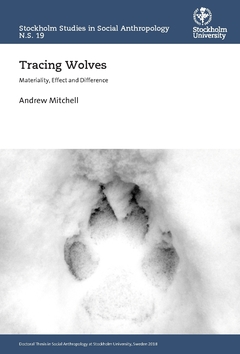Wolves in Sweden are often experienced via a number of different traces rather than via direct visual observation. Based on extensive fieldwork in Scandinavian wolf areas the author traces the wolf as it emerges and becomes known as ‘scientific’ research and ‘monitoring’ and ‘managing’ practices are conducted. Not only are wolf traces interpreted via traditional snow tracking methods, recent advances in technology facilitate the recognition of other traces, such as wolf DNA or GPS data transmitted by wolf collars. This study considers how human-wolf relations emerge in the context of such practices, and in the process contemplates how wolves and humans share a sociality that crosses the species divide.
This is a doctoral thesis in Social Anthropology at Stockholm University, Sweden 2018.






